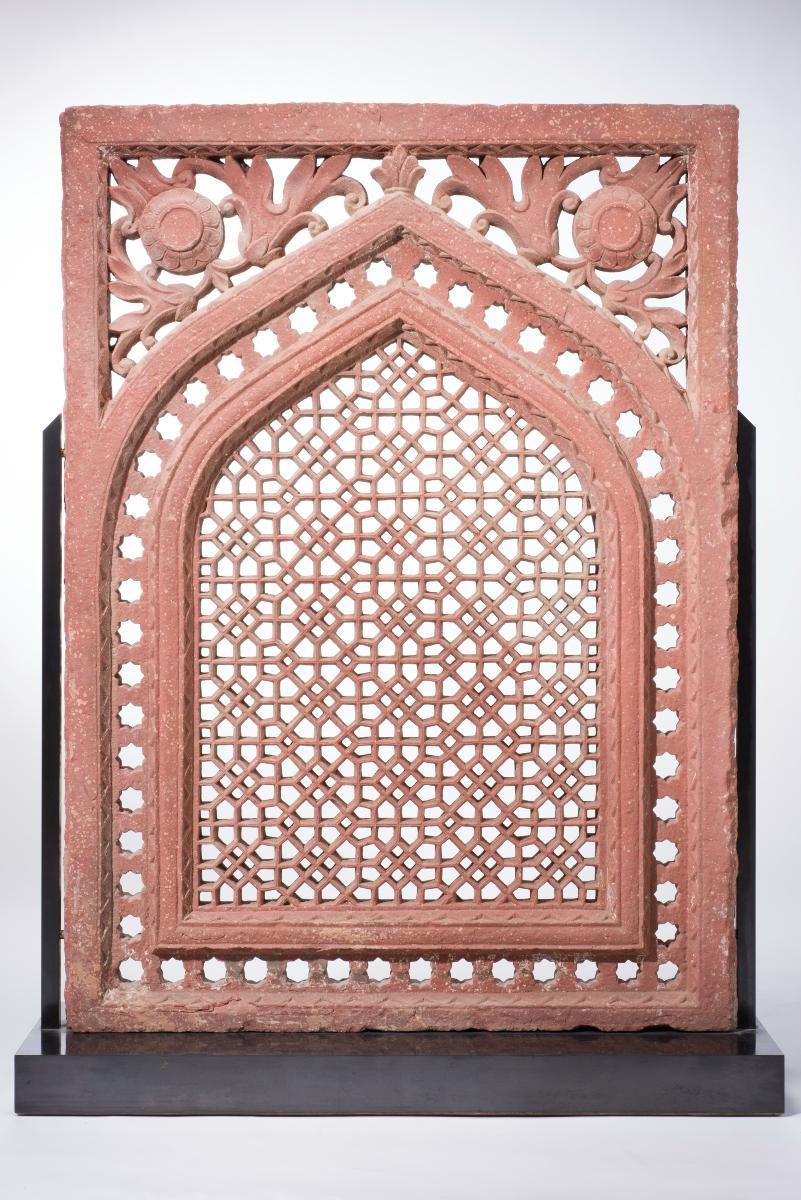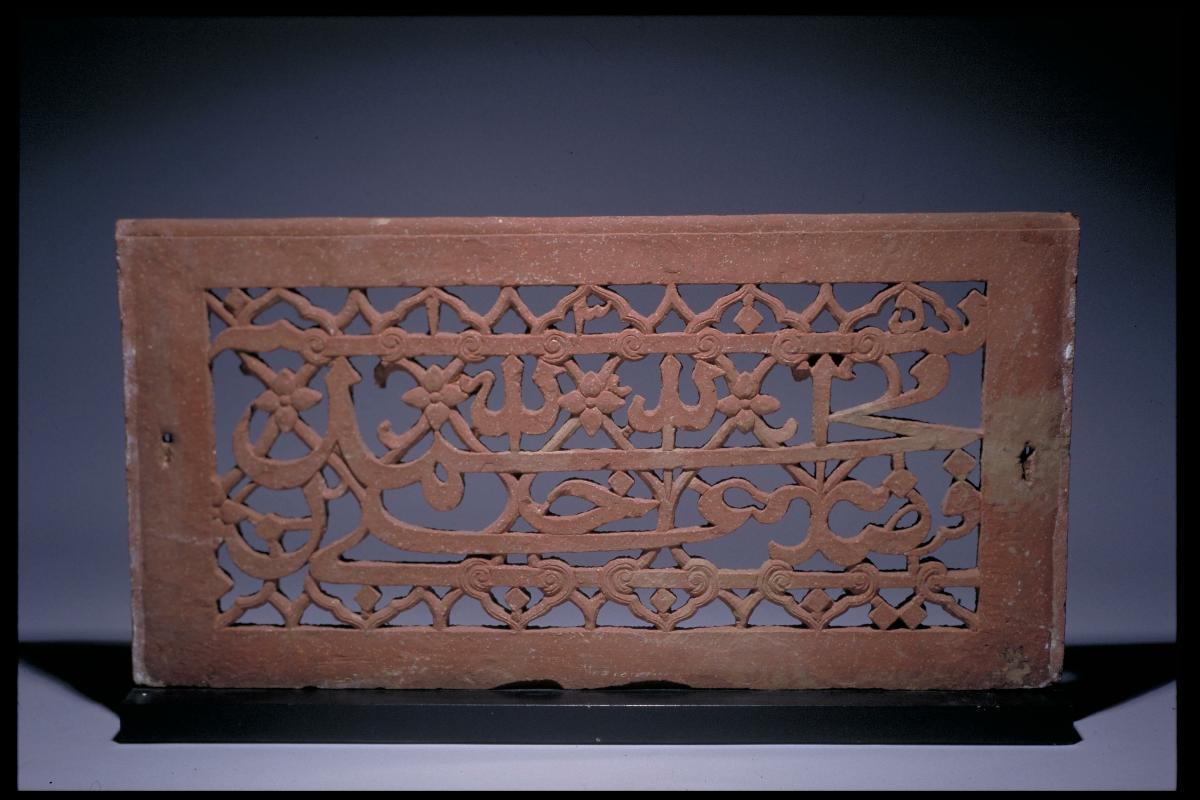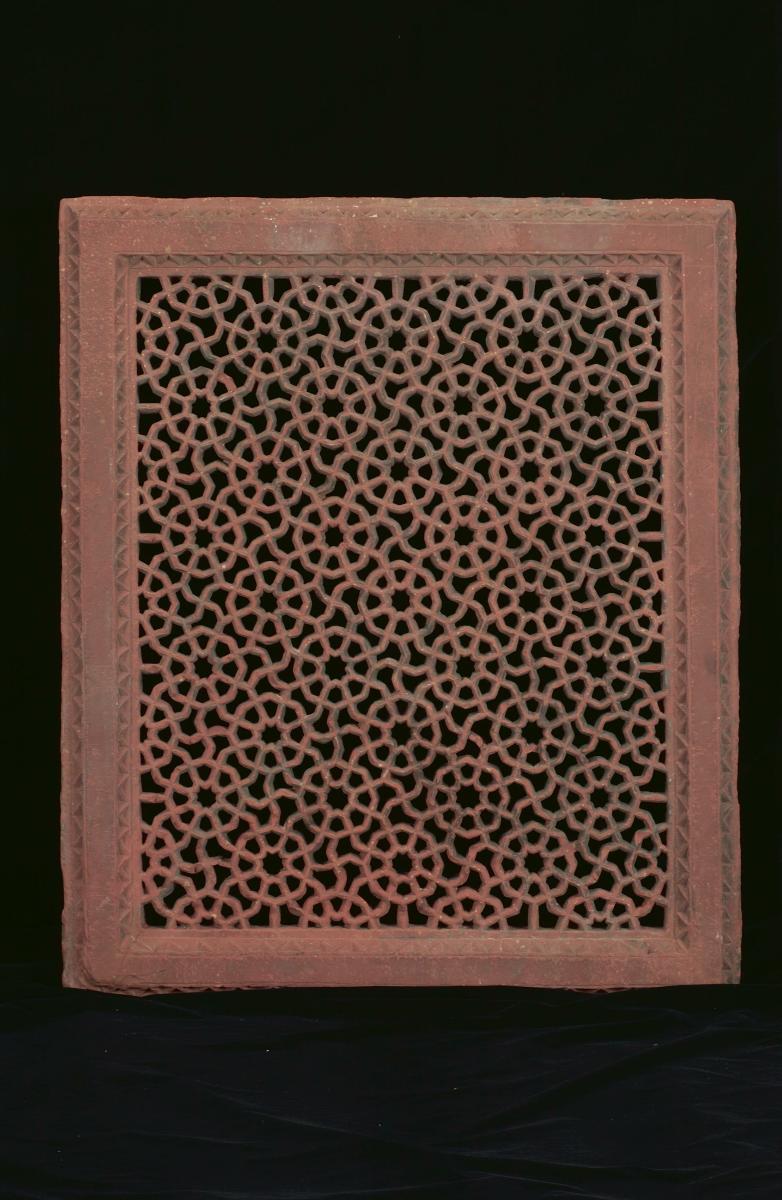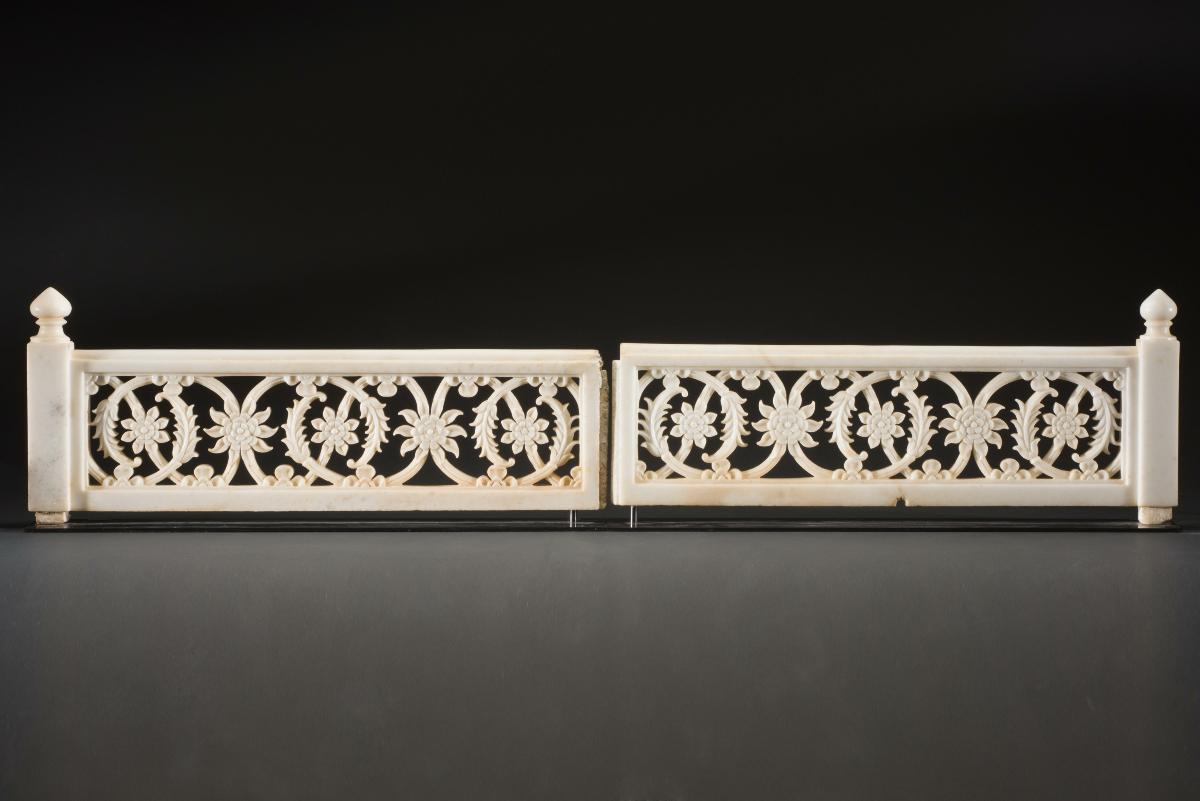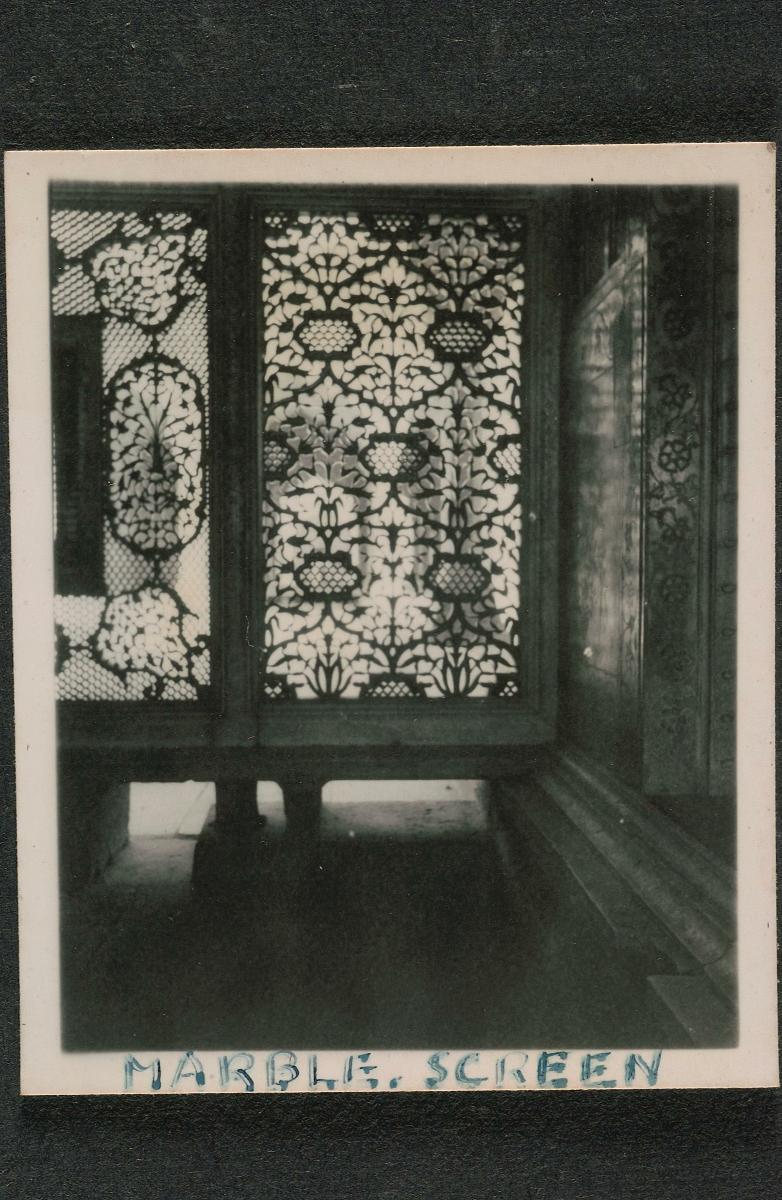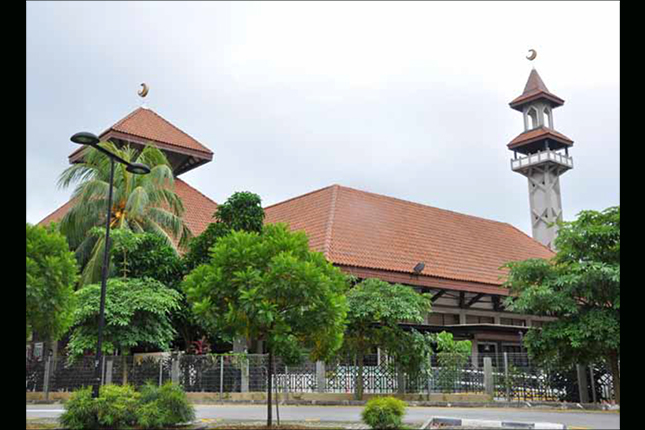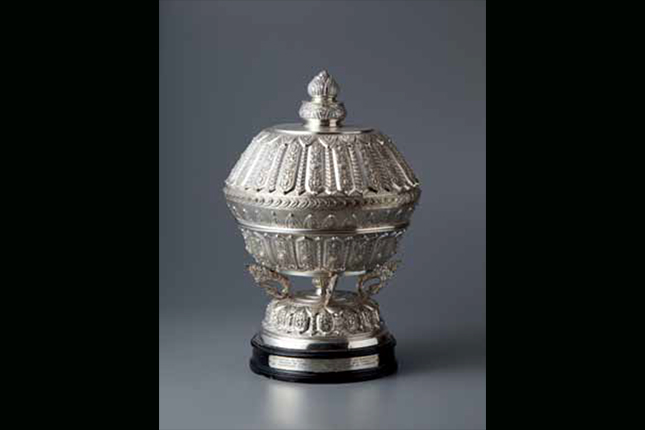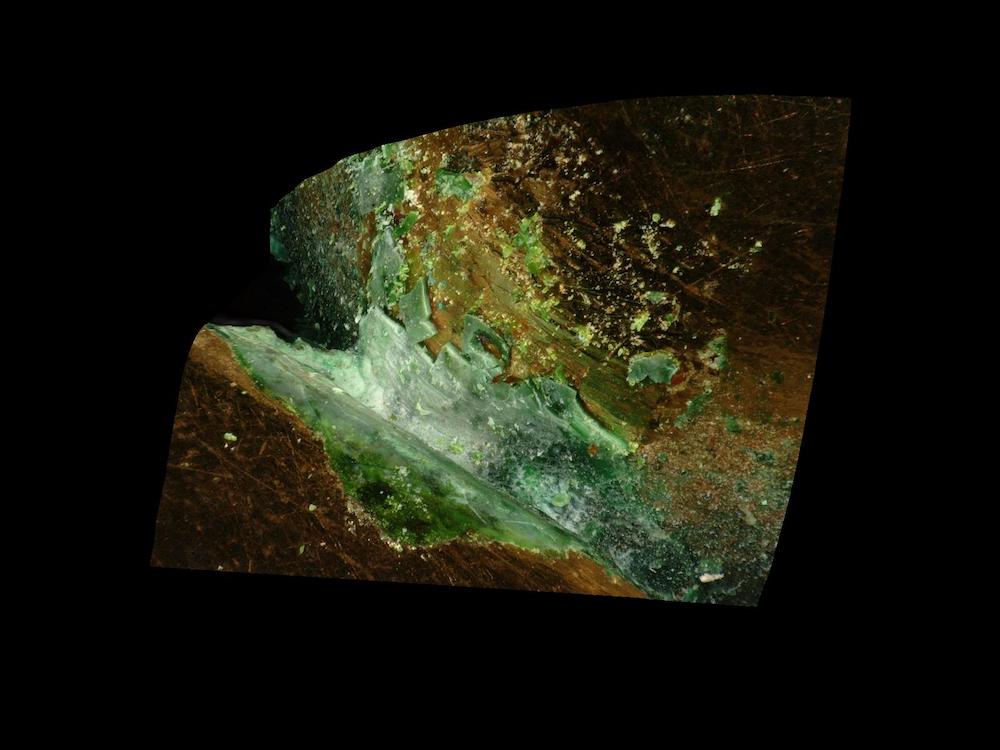This Mughal lattice work red sandstone Jali screen is typical of Mughal geometric design which allows light and air into the room. The screen's rectangular frames consist of double mihrab divided by perforations. The inter-linked lattice within the inner mihrab (prayer niche) is carved with hexagonal and octagonal patterns. The passion for exploring geometric patterns in the Islamic art of India is exemplified in these windows. Besides allowing light and air into a room, jali windows sub-divided the architectural space between interior and exterior. From the earliest times, the use of perforated windows was prevalent in north and south India.




